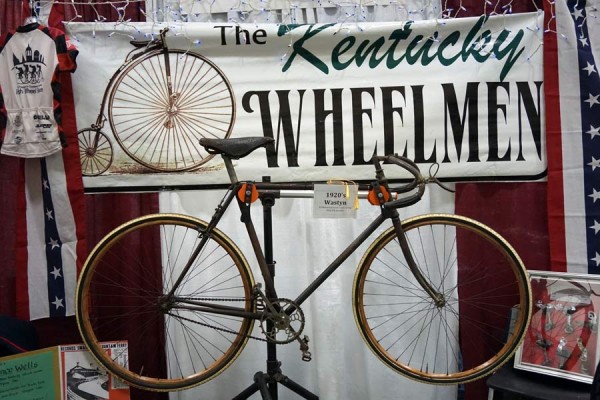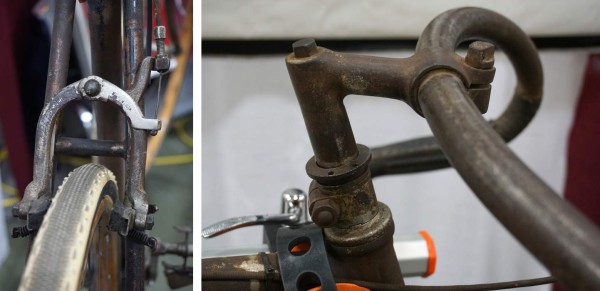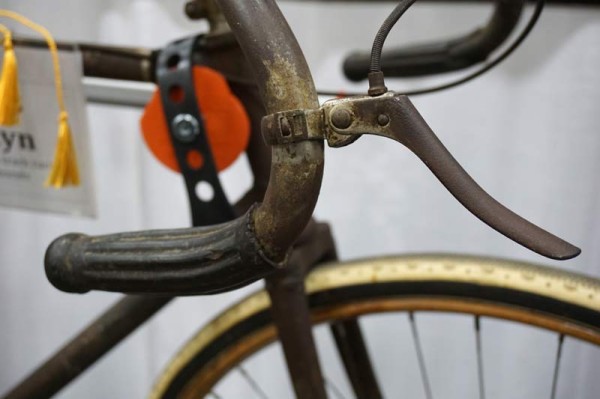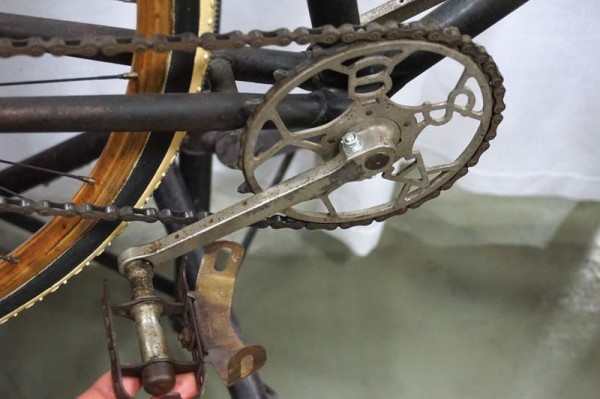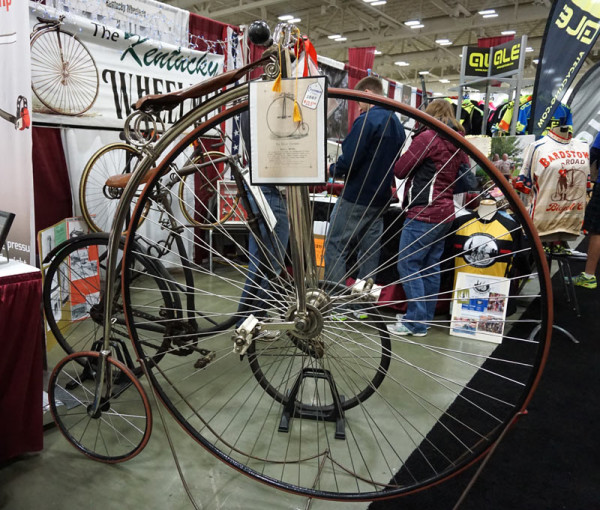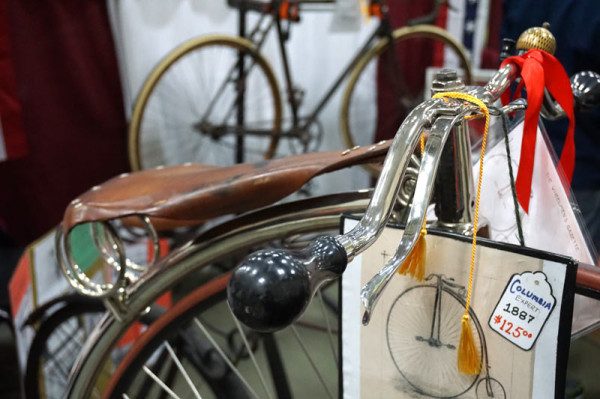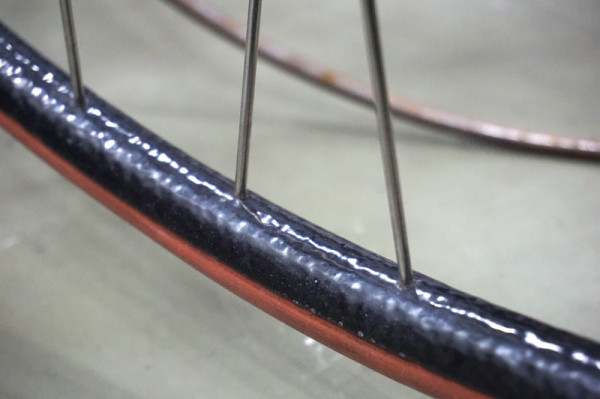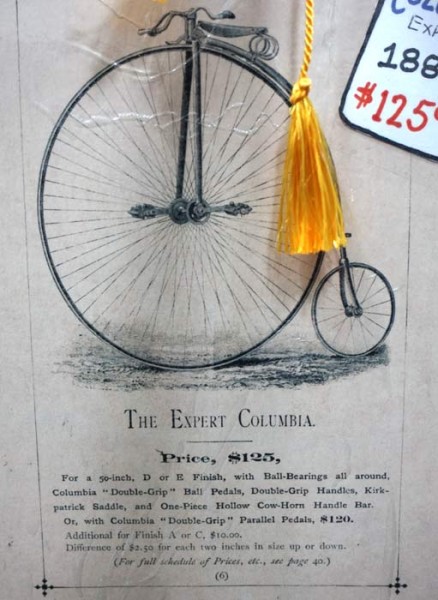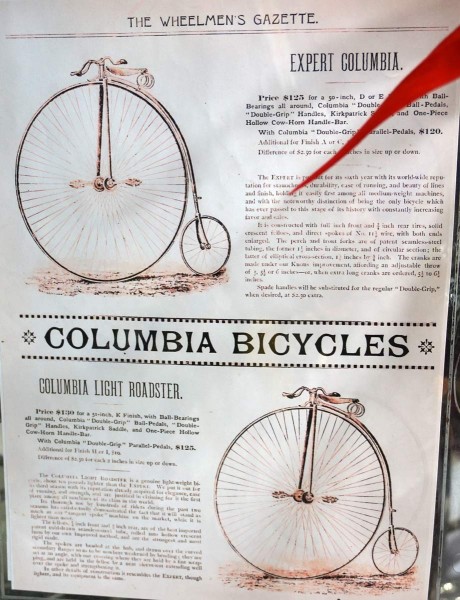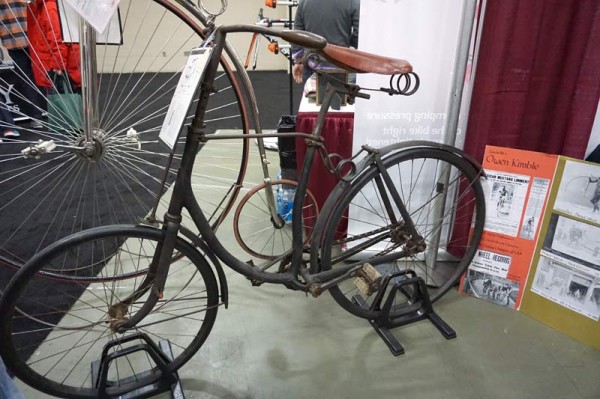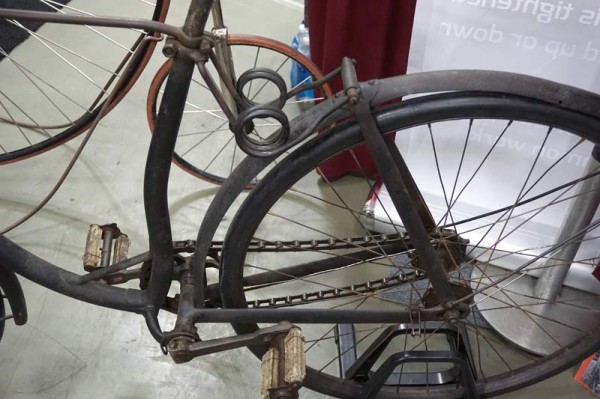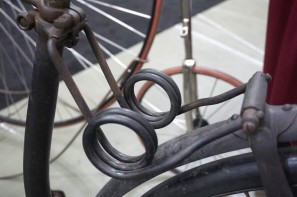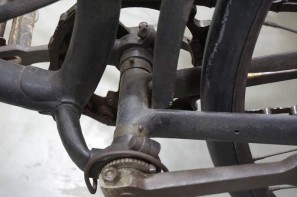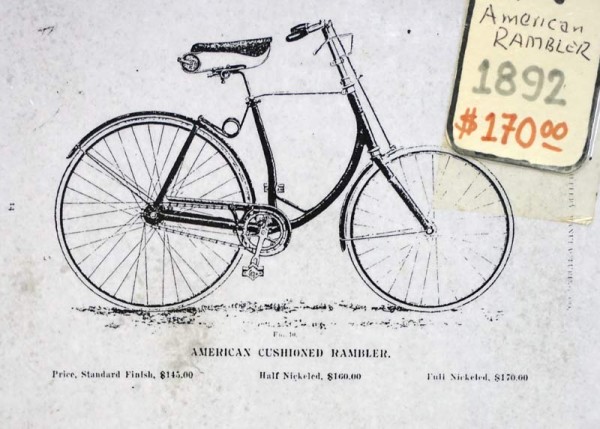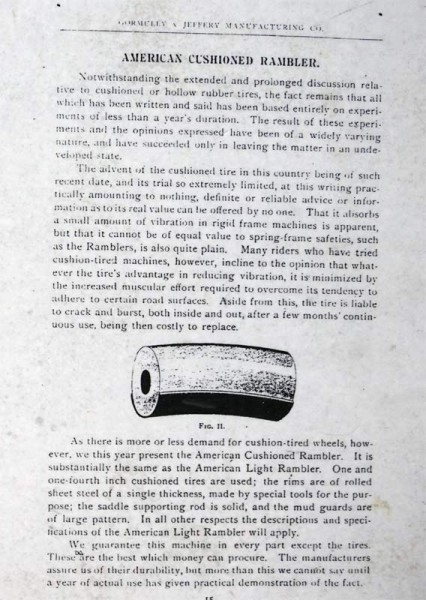The Kentucky Wheelman brought several classic road bikes to NAHBS this year, each showcasing a different style and some very interesting ways of making the parts work. While so much is remarkably similar, the bicycles from the 1800’s and early 1900’s also show just how much has changed.
This 1920 Wastyn is the most modern of the three they displayed was built by Belgian Emil Wastyn after moving to America in 1910. This early model preceded his building of the very first Schwinn Paramount nearly two decades later (quick history of the brand here).
Hit ‘more’ to turn back the clock…
The rear brake caliper was made by Bowden of Tyseley, in the UK, and used small coil springs attached to the seatstays to retract the pads (click to enlarge). Some Wastyn’s had a small damper near the headset to soften the steering response coming from the less than ideal road surfaces…an idea rehashed in the early 90’s on mountain bikes!
Hope you had long fingers.
Perhaps this is where “BSA” bottom brackets really got there name?
This High Wheeler comes from 1887. The bigger wheels were all about increasing speed, but required a stronger rider to take advantage of the increased circumference. The advent of chains and gears brought about the advent of smaller “safety” bicycles that could attain the high speeds desired without the impracticality of a high wheeler. Otherwise, maybe we’d have a rash of 50″ plus bike taking over enduro.
Considering the year, none of these bikes were cheap. This same bike would be $3,240 in 2014 U.S. dollars!
Click to enlarge both flyers.
The 1892 American Rambler Cushion Bicycle brought mechanical frame suspension to the table and was made by Gormully & Jeffery Mfg Co., in Chicago. The rear end pivoted around the bottom bracket to keep the chainstay length the same, which was necessary since it was a fixed gear bike. Note the top tube, essentially just a steel bar.
The cushion was provided party by the metal springs at the top. Without damping, it probably made for a bit of bounce under hard efforts. Fortunately, these weren’t used for much interval training.
This one would run about $4,411 in 2014 dollars.
The rest of the bike’s comfort came from a sprung leather saddle and the 1-1/4″ cushioned tires
